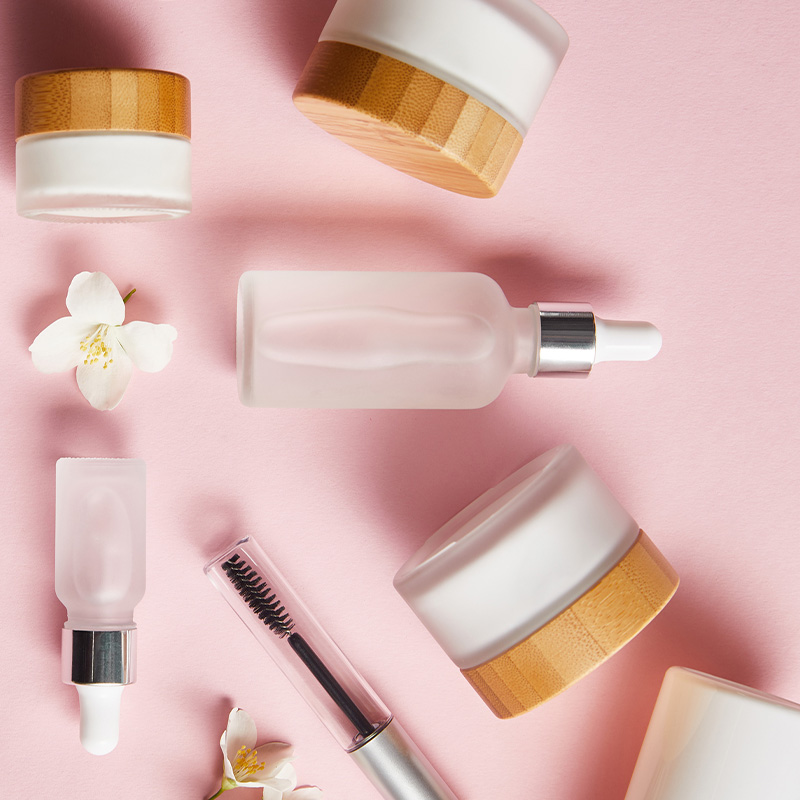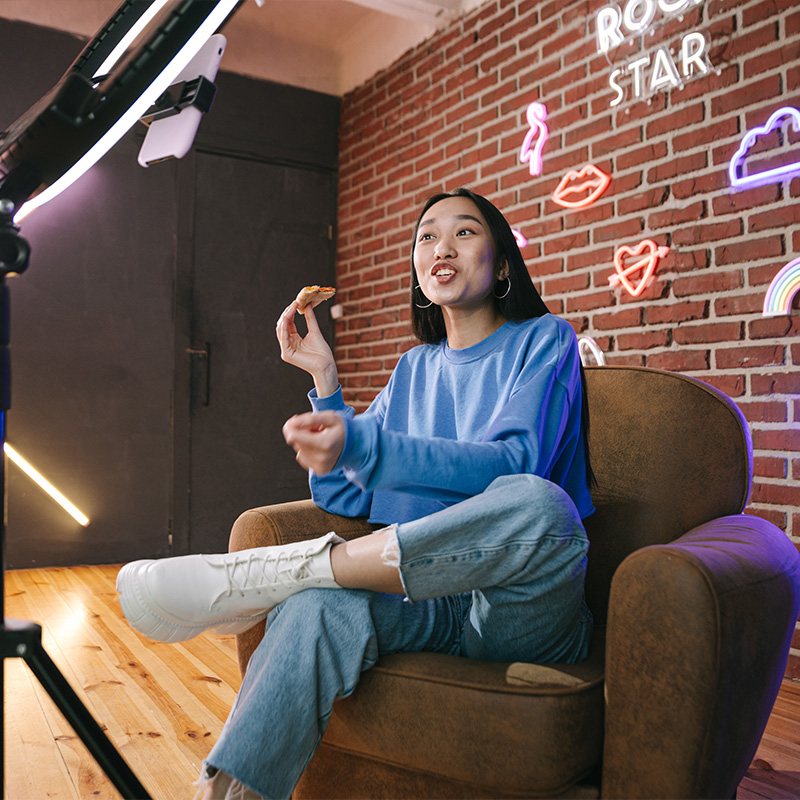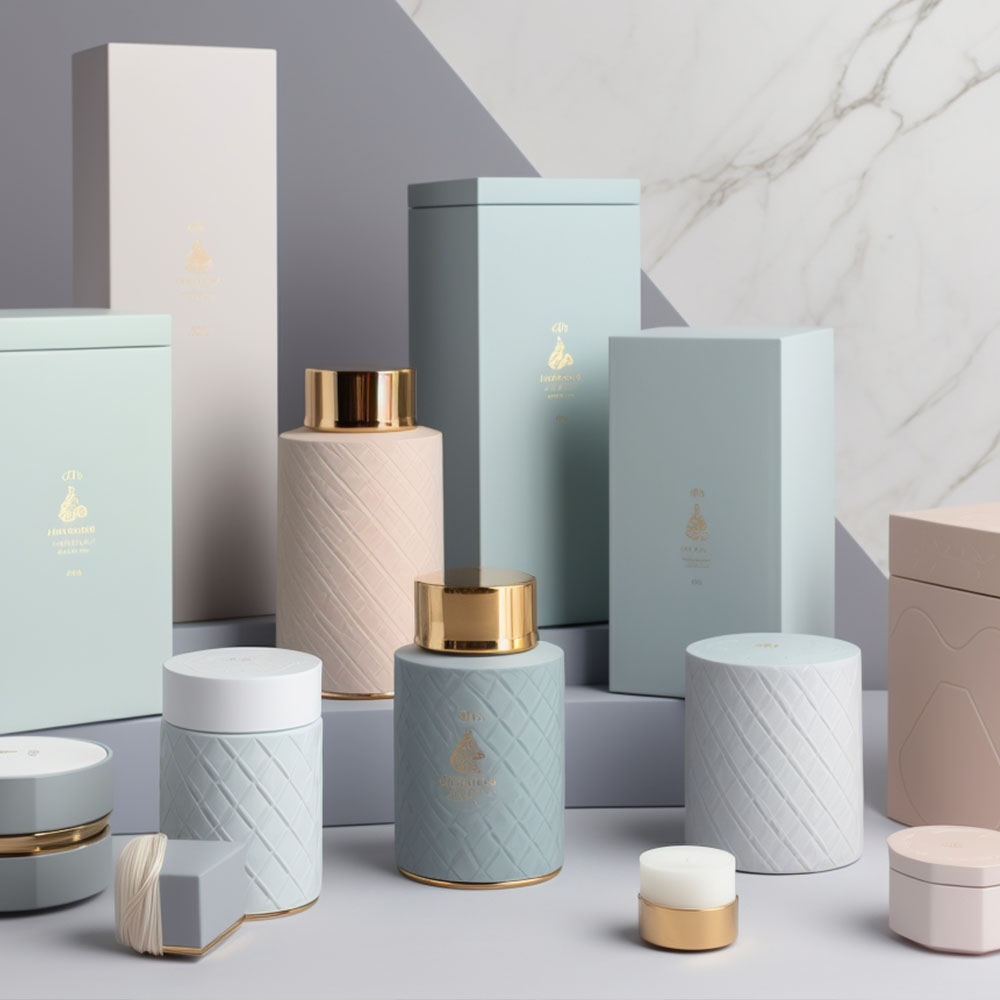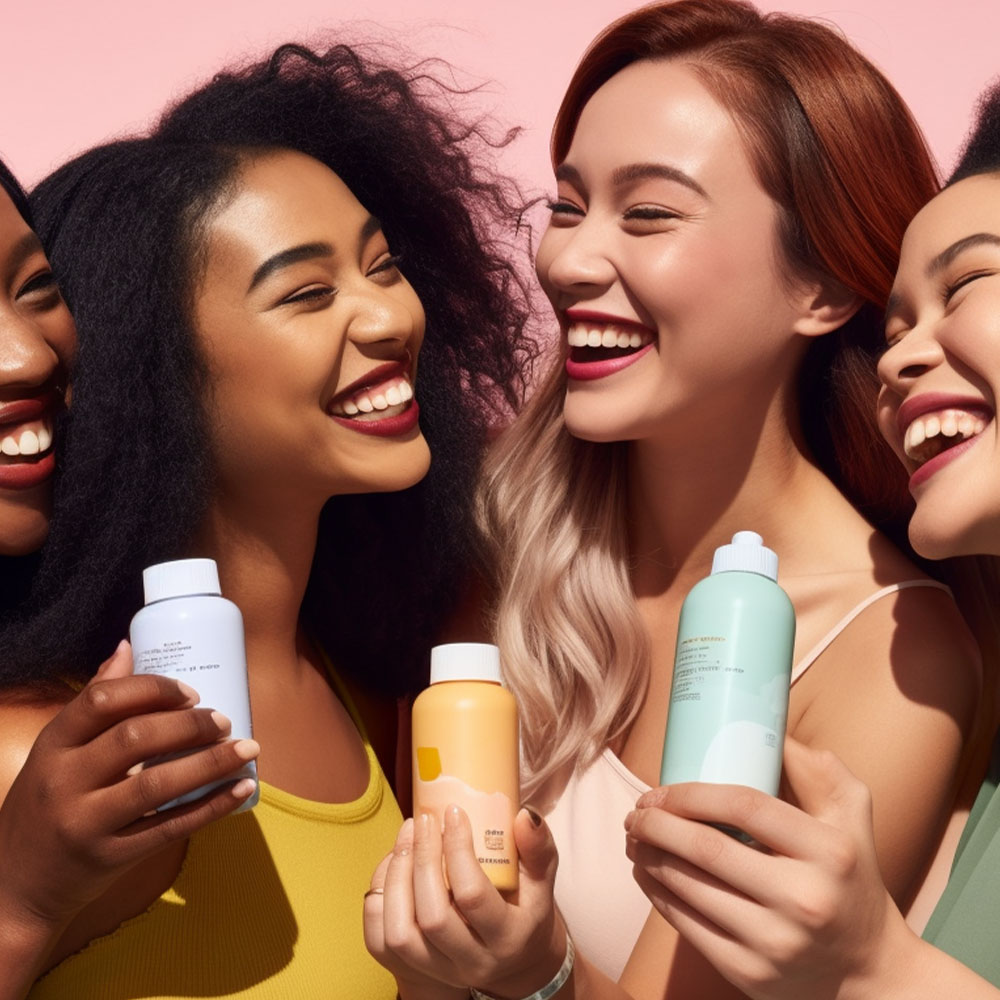
Hey there, beauty enthusiasts! Are you ready to take your brand experience up a notch? In the marketing world, one powerful tool that has been gaining traction in recent years is experiential marketing. And when it comes to beauty brands, this approach can be an absolute game-changer.
Experiential marketing involves creating immersive and engaging consumer experiences that allow them to connect with a brand on a deeper level. For beauty brands, this means going beyond traditional advertising methods and providing customers with memorable, interactive experiences that showcase their products in action. By doing so, these brands can create authentic connections with their audiences and foster long-term loyalty. So if you’re looking to elevate your beauty brand and stand out from the competition, read on to discover the power of experiential marketing in the beauty industry.
Understanding Experiential Marketing
Picture this, you’re at a beauty counter, and the salesperson hands you a sample of their latest skincare product. As you try it out, they explain how it works and why it’s perfect for your skin type. This is an example of experiential marketing – a strategy that creates memorable customer experiences to engage with products or services.
Experiential marketing has become increasingly popular as brands realize the benefits of connecting with consumers personally. By immersing customers in unique and interactive experiences, companies can build brand loyalty, increase engagement, and drive sales. Beauty brands have embraced this approach because they understand the importance of building trust with their customers regarding appearance and self-care.
One successful implementation of experiential marketing by beauty brands is through events such as pop-up shops or beauty workshops. These activations allow customers to learn about new products while engaging in fun activities like makeup tutorials or personalized consultations. In addition, brands like Sephora have taken advantage of this strategy by hosting “Beauty Insider” events where members are invited to exclusive shopping experiences with free samples and makeovers.
Another effective way beauty brands use experiential marketing is through social media campaigns that encourage user-generated content (UGC). For example, companies like Glossier have built entire communities around UGC by sharing customer photos featuring their products on Instagram. This provides free advertising and creates buzz among followers who want to be part of the conversation.
In conclusion, experiential marketing offers endless opportunities for beauty brands seeking innovative ways to connect with customers beyond traditional advertising. Whether through events or social media campaigns, implementing creative strategies can increase brand awareness, customer loyalty, and ultimately higher sales conversions. So next time you’re trying out that free sample at the beauty counter, remember – there’s more behind that experience than meets the eye!
The Importance Of Connection
Beauty brands must understand the importance of human connection and empathy in experiential marketing to connect with consumers truly. Emotional resonance is critical to creating a lasting impression on potential customers, and it can only be achieved through genuine interactions that leave an impact.
One way to establish emotional resonance is by adding a personal touch to your brand’s experiences. This could mean tailoring events or pop-ups to specific demographics or individual preferences. Doing so shows consumers that you value their unique perspectives and are invested in providing them with an unforgettable experience.
Another crucial aspect of establishing a connection is empathy. To create meaningful consumer experiences, brands must take the time to understand their needs and desires. This means listening carefully to feedback and incorporating it into future campaigns or product offerings.
By prioritizing personalization and empathy in your experiential marketing efforts, you increase the likelihood of building long-term relationships with customers and differentiate yourself from competitors who prioritize mass appeal over tailored experiences.
Ultimately, genuine connection requires ongoing effort and a willingness to adapt based on consumer feedback. However, by investing in personalized experiences that resonate emotionally with your target audience, you can set your brand apart while building loyal customer relationships for years.
Creating Authentic Experiences
Creating Memorable Experiences is the primary objective of experiential marketing. This approach has become increasingly popular among beauty brands, as it allows them to connect with customers more meaningfully. By engaging all five senses, marketers can make their brand come alive and create lasting impressions that drive purchase decisions.
Personalizing the Customer Journey is another essential element of successful experiential marketing campaigns. Consumers crave personalized experiences that resonate with their individual needs and preferences. Therefore, beauty brands need to understand their target audience’s psychographics, demographics, and behaviors to deliver relevant messaging that resonates emotionally.
The key to creating authentic experiences is understanding your consumers’ pain points and delivering solutions through immersive activations. These events should be designed around the customer journey, considering every touchpoint from initial awareness to post-purchase follow-up. The most effective tactics involve interactive elements such as virtual try-ons or product demonstrations that allow consumers to engage directly with the brand.
In today’s crowded marketplace, creating memorable experiences is no longer a nice-to-have but a must-have for beauty brands looking to stand out. Personalizing the customer journey is critical for building long-term relationships with loyal customers who will continue to advocate for your brand over time. With careful planning and execution, experiential marketing allows beauty brands to differentiate themselves while forging deeper connections with their audiences – ultimately driving sales growth and increasing market share.
Building Brand Loyalty
Leveraging social media is essential for beauty brands to build brand loyalty. Personalization strategies make customers feel like their needs and desires are being heard, which is critical to gaining their trust. In addition, it’s essential to think of creative ways to engage customers through social media, such as giveaways, contests, and more. It’s all about creating a unique, memorable experience that resonates with customers, making them loyal to your brand.
Leveraging Social Media
As beauty brands compete in an ever-evolving market, the power of experiential marketing has become increasingly important. One strategy that has proven successful in maximizing reach and building brand loyalty is leveraging social media. Creating shareable moments through interactive experiences allows beauty brands to engage with their audience more deeply.
Social media platforms such as Instagram and TikTok have transformed how people consume content and interact with brands. As an experiential marketing expert for beauty brands, it’s essential to understand how to leverage these platforms effectively. Creating immersive experiences that are visually appealing and engaging can help draw attention from potential customers while also keeping current fans interested.
One effective way to create shareable moments on social media is by hosting events or pop-ups that allow attendees to experience products firsthand. These events provide opportunities for consumers to try out new products and generate excitement around the brand. In addition, encouraging attendees to document their experience on social media using branded hashtags or filters helps extend the reach even further.
Another way to leverage social media is by partnering with influencers or micro-influencers who align with the brand’s values and aesthetic. Influencer partnerships can increase exposure among target demographics and add credibility to the brand. In addition, influencer collaborations can lead to authentic engagement and long-term customer loyalty when executed correctly.
In conclusion, leveraging social media is a powerful tool for building brand loyalty through experiential marketing strategies in the beauty industry. Maximizing reach through immersive experiences and collaborating with relevant influencers are two effective ways of creating shareable moments to keep your audience engaged. In addition, by staying ahead of trends and incorporating innovative ideas into your campaigns, you’ll stand out in a crowded marketplace.
Personalization Strategies
Now that we’ve discussed how social media can be leveraged to build brand loyalty through experiential marketing let’s dive into another essential strategy – personalization. Customization techniques have become increasingly popular in the beauty industry as consumers seek products tailored to their unique needs and preferences. In addition, personalized experiences foster a deeper emotional connection with customers, increasing customer engagement and, ultimately, greater brand loyalty.
One way to incorporate personalization strategies is by offering personalized product recommendations based on individual skin types or concerns. This could be done through online quizzes or consultations at retail locations. By providing customers with customized solutions, brands can demonstrate a commitment to meeting their specific needs and building trust.
Another effective way of implementing personalization is through bespoke packaging or limited edition collections. These exclusive offerings make customers feel special and appreciated while creating excitement around the brand. Brands can leverage this technique by incorporating unique design elements or collaborating with artists to create one-of-a-kind packaging.
Personalized communication is critical for building long-term relationships between brands and their customers. One approach is sending targeted email campaigns containing relevant content or promotions based on past purchases or browsing behavior. In addition, social media platforms such as Facebook allow retargeting ads, which use cookies to target users who previously visited your site but did not convert into buyers.
Incorporating customization techniques and fostering authentic customer engagement are critical factors in building brand loyalty in today’s beauty industry. The more personalized an experience becomes, the stronger the bond between customers and brands will grow. So keep innovating, stay ahead of trends, embrace new technologies, and always strive for authenticity in all aspects of your marketing campaign!
Engaging With Your Audience
Creating a unique experience for your audience is the key to successful experiential marketing. Interactive displays and personalized consultations are two great ways to do this. With interactive displays, customers can explore your products engagingly, making them feel like they’re part of something special. Personalized consultations take it further by giving each customer individual attention and guidance.
When designing interactive displays, remember that beauty is all about visual appeal. Use vibrant colors, exciting textures, and creative design elements to draw people in. Ensure everything is easy to use and understand so anyone can participate without feeling overwhelmed or confused.
Personalized consultations are another way to engage with your audience more deeply. By listening to their needs and desires, you can provide tailored recommendations that resonate with them. This helps build trust and encourages repeat business as customers return for more personalized advice.
Engagement should always be at the forefront of your experiential marketing strategy. Whether through interactive displays or personalized consultations, finding ways to connect with your audience will help you stand out from competitors while driving sales and building brand loyalty.
Showcasing Your Products
Engaging with your audience is crucial in experiential marketing. It’s all about creating an emotional connection that will make them want to engage with your brand repeatedly. For example, as a beauty brand, you can use interactive displays that allow customers to try out different products and experiment with new looks.
Interactive displays are becoming increasingly popular in the beauty industry as they allow consumers to test out products before making a purchase. These displays can be anything from virtual reality experiences to augmented reality mirrors that allow customers to see what they would look like wearing specific makeup or skincare products.
Product demonstrations are another effective way of showcasing your products. Demonstrating how a product works gives potential customers a better understanding of its benefits and show them how it could fit into their daily routine. This helps build trust and encourages sales, as people are more likely to buy something when they know exactly what it does.
To make an impact, consider hosting events where customers can interact with your products and learn more about your brand. This could be anything from a masterclass on perfect winged eyeliner to a skincare workshop where attendees can create their own custom serum or face mask.
Markdown format:
- Interactive displays
- Product demonstrations
- You host events such as makeup masterclasses or skincare workshops to educate and engage customers about your brand and products.
Utilizing Social Media
As an experiential marketing expert for beauty brands, I’ve seen the power of social media in engaging consumers and creating viral campaigns. With over 3 billion active users on various platforms, it’s no wonder that social media has become a crucial tool for any brand looking to make an impact.
One key aspect of utilizing social media is creating engaging content. Consumers are bombarded with countless ads daily, so creating content that stands out and resonates with them is essential. Videos, interactive polls, and behind-the-scenes glimpses help capture attention and keep your audience engaged.
In addition to creating engaging content, another way to utilize social media is by launching viral campaigns. These campaigns can range from challenges or contests encouraging user-generated content to collaborations with influencers or other brands. The goal is not only to increase brand awareness but also to generate buzz and excitement among followers.
To illustrate the effectiveness of utilizing social media, let’s take a look at this table below showcasing the top-performing beauty brands on Instagram:
| Brand | Number of Followers |
|---|---|
| Glossier | 2.8 million |
| Huda Beauty | 44 million |
| Fenty Beauty | 12.7 million |
| Kylie Cosmetics | 25 million |
| Anastasia Beverly Hills | 20.6 million |
As you can see, each of these brands has leveraged its social media presence effectively through engaging content and viral campaigns.
Using social media as part of an experiential marketing strategy can be incredibly effective for beauty brands looking to connect with their target audience innovatively. By creating engaging content and launching impactful campaigns, brands can build lasting relationships with their customers while increasing visibility and driving sales.
Collaborating With Influencers
As discussed in the previous section, social media has incredible power to amplify your brand’s message and reach. However, there is another aspect of marketing that can exponentially increase your exposure: collaborating with influencers.
Influencer partnerships have become crucial to many beauty brands’ marketing strategies. These collaborations allow you to leverage the influencer’s dedicated audience to promote your products and services. However, to ensure maximum impact, selecting the right influencer for your brand is essential.
When selecting an influencer, focus on finding someone who aligns with your brand values and has a following that matches your target demographic. It’s also vital to consider their engagement rates and authenticity – these factors will ultimately determine how well-received your campaign will be.
Once you’ve identified potential collaborators, it’s time to start building relationships with them. First, reach out to introduce yourself and explain your interest in working together. Be clear about what you hope to achieve from the partnership so they know what content or promotion they should create for you. You’ll establish long-term relationships that benefit both parties by fostering authentic connections with influencers.
Partnering with influencers can provide unparalleled exposure for beauty brands looking to expand their reach. In addition, companies can build lasting success through experiential marketing tactics like this by carefully selecting the right collaborators and nurturing those relationships over time.
Measuring Success
Analyzing metrics is a crucial aspect of any marketing campaign. This is especially true for experiential marketing, where traditional means such as impressions or clicks cannot measure the campaign’s success. Instead, brands must look at more qualitative measures such as engagement and brand awareness.
One way to measure the success of an experiential marketing campaign for beauty brands is through social media monitoring. By tracking hashtags and mentions related to the event, we can gauge overall sentiment and how many people are talking about it online. Additionally, analyzing user-generated content (UGC) can provide insight into which aspects of the experience resonated with attendees.
Another essential metric to consider when measuring ROI for experiential marketing campaigns is foot traffic. How many people attended the event? Did they spend time interacting with the brand’s products and services? By calculating the cost per attendee and factoring in conversion rates, brands can determine whether their investment in the event was worthwhile.
Ultimately, it’s important to remember that measuring success isn’t just about looking at numbers on a spreadsheet. It’s also about understanding how your target audience perceives your brand and whether you were able to create a memorable experience that will keep them coming back for more. By taking a holistic approach to ROI calculation, beauty brands can continue to innovate with their experiential marketing strategies while staying grounded in data-driven insights.
Staying Ahead Of The Curve
As a beauty brand, staying ahead of the curve and constantly innovating is crucial. Consumers are always looking for something new and exciting, and innovative strategies can help keep them engaged with your brand. Emerging trends in experiential marketing offer many opportunities to do just that.
- Virtual Reality: With VR technology becoming more accessible, incorporating virtual reality into your experiential marketing campaigns can create an immersive experience for consumers. This allows them to interact with your products and brand in new ways.
- Social Media Integration: Social media has become a central part of our daily lives, so it’s essential to incorporate social media elements into your experiential marketing campaigns. This can include creating shareable moments or using interactive hashtags to increase engagement.
- Personalization: Personalized experiences resonate with consumers on a deeper level than generic ones. Incorporating personalization tactics like customized product recommendations or personalized consultations can leave a lasting impression on customers.
- Sustainability: As consumers become increasingly environmentally conscious, incorporating sustainability into your brand culture and experiential marketing campaigns can attract eco-conscious consumers and strengthen your brand image.
By keeping up with emerging trends in experiential marketing, you can ensure that your beauty brand stays relevant and engaging for today’s consumers. Innovative strategies like virtual reality integration, social media engagement, personalization tactics, and sustainability efforts provide unique opportunities to set yourself apart from competitors while providing valuable customer experiences without relying solely on traditional advertising methods.
With these cutting-edge approaches, you’ll be well-equipped to stand out as a leader within the industry by staying ahead of the competition while simultaneously delivering memorable experiences that will keep your audience coming back time after time!
Conclusion
Connection and authenticity cannot be underestimated. It’s ironic how a world obsessed with digital communication can create such a strong desire for real-life experiences. By providing opportunities for customers to try your products and engage with your brand on a personal level, you are creating lasting connections that will keep them coming back for more.
But don’t just take my word for it – the numbers speak for themselves. Brands focusing on experiential marketing have seen increased customer loyalty, improved brand perception, and higher sales conversions. So why not invest in creating unique and memorable experiences that showcase the essence of your brand? After all, in today’s crowded market, standing out is crucial to success. So embrace the power of experiential marketing and watch your brand thrive!
Start building your brand with us today. Click here.









